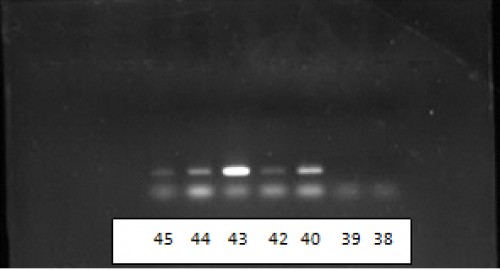Abstract: Background and objective: Leishmaniasis is a parasitic disease that is caused by protozoan parasites of the genus
Leishmania. Cutaneous Leishmaniasis is an important sanitation and public health issue in Iran. The identification of
Leishmania parasites in human, source, and carriers of the disease through routine laboratory methods, isoenzyme, monoclonal antibodies, and the proliferation of part of the genome of
Leishmania parasites by polymerase chain reaction (PCR) method is common in Iran. However, certain identification and confirmation of the parasite is always associated with doubt without determining the sequencing of the genome of
Leishmania parasites. The objective of this research was to search for
Leishmania species in human isolated bloods.
Methods: This research was a descriptive-analytical experiment that consisted of 41 samples provided by Pasteur Institute of Iran. In the present study, in order to identify the species of Leishmania parasites in human isolates with wet cutaneous Leishmaniasis, first, culture in biphasic medium was carried out, and then, DNA was extracted from cultured promastigotes. Standard PCR was employed to detect Leishmania by amplifying a region of the ribosomal RNA genes (ITS1-rDNA). Amplicons were examined with Gel electrophoresis. PCR products were directly sequenced and molecular software applications were employed to confirm the species of the Leishmania.
Results: Leishmania species were detected using Standard PCR and sequencing of ITS1-rDNA gene. Sequence analysis revealed that 17 out of 39 positive samples were Lishmania major. Crithidia fasciculata was observed in 5 samples; 16 samples were unnamed Leishmania; only one sample was identified as Leishmania tropica; and one sequence was unreadable therefore not identified.
Conclusion: With its high accuracy and sensitivity, ITS1-rDNA amplification and sequencing is one of the best methods to identify different species of Leishmania.
 Fig.:
Fig.: Electrophoresis images of PCR ITS1 products. Lanes 38 and 39: no result, Lanes 40 and 42: L. major, lanes 43 and 44: Unnamed Leishmania, lane 45: L.tropica.



